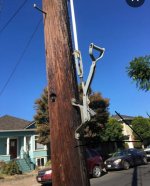Good evening!
Anyone with a Create 50-1300MHz CLP-5130-1N (or it's variants) measured how it performs transmitting in the VHF 150's & 160's MHz (MURS, Commercial, and Marine bands) and UHF 450's and 460's MHz (Commercial and GMRS bands)? If it is a decent performer in these areas, it may well be one of the few true antenna-farm-in-one antennas!
I am planning on flying this antenna on a mast at approx. 40' with a 125' run of coax into my 'ham shack-closet' to allow for full spectrum 6m, VHF, 220, and UHF Rx and Tx coverage with one antenna.
Thanks!
Anyone with a Create 50-1300MHz CLP-5130-1N (or it's variants) measured how it performs transmitting in the VHF 150's & 160's MHz (MURS, Commercial, and Marine bands) and UHF 450's and 460's MHz (Commercial and GMRS bands)? If it is a decent performer in these areas, it may well be one of the few true antenna-farm-in-one antennas!
I am planning on flying this antenna on a mast at approx. 40' with a 125' run of coax into my 'ham shack-closet' to allow for full spectrum 6m, VHF, 220, and UHF Rx and Tx coverage with one antenna.
Thanks!


